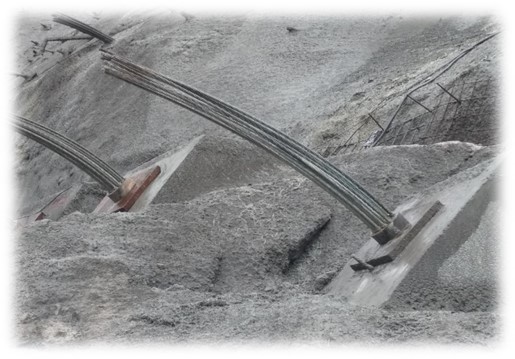
Ground anchors/tie-backs are flexible elements used to hold, restrain and support excavation for building and civil engineering structures either temporarily or permanently. Installation method depending upon the existing ground conditions. Ground anchors are used to securing pile walls, sheet piles, mixed-in-Place walls or diaphragm walls, steep slopes, support embankments, and quay walls. Installing ground anchors is a technically elegant, cost-effective, and operationally efficient solution for many construction projects.
Applications areas include:-
- Deep excavations – To provide deformation resistance, support the existing structural loads at levels of excavation supported by ground anchors.
- Tiebacks members – To support various bending elements, including micropiles, piles, sheet piles, etc., by supporting these elements at the head and intermittent levels.
- Uplift control due to pore water pressure – The presence of groundwater leads to increased pore pressure between soil particles, leading to a reduction in principal effective stress.
- Positional stability – By arresting the lateral displacements and providing stability.
- Rock slope stabilization – By providing the toe protection for slope, thereby imparting global stability.
Permanent Anchors
Permanent anchoring is more common in civil applications for the stabilization of long term serviceability structures. Permanent anchors are ground anchors with a life of somewhere around 100 years and thus forms a part of a permanent structure. Permanent anchors are executed as strand anchors, single-rod corrugated tube anchors, or single-rod pressure tube anchors, which have bonded and unbonded length. Grout fillings at in and outside ensure long term corrosion protection. Smooth duct surrounds the free anchor length, while corrugated surround the bonded length.
Special caution should be taken for long term steel relaxation criteria. Hollow space in the anchor head is filled with corrosion-proof compound. For permanent anchors, the use of properly protected prestressing steels is recommended. The key points of permanent anchors are the corrosion protection to provide extended design life and protected anchor head, enable check and re-stressing the free anchor length during service life.
Temporary Anchors
Temporary ground anchors are used to carrying high tensile forces onto the load-bearing stratum in a limited period of time, less than two years. The holes are drilled by rotary or percussion drilling techniques for temporary ground anchors with or without casing depending upon strata (collapsible or not), followed by inserting wire strands and grouting the hole. Tensioning/ stressing of an anchor is then done and locked off against the anchor head plate. Temporary anchors are de-stressed and removed where it is necessary after completion of protection facing structure.